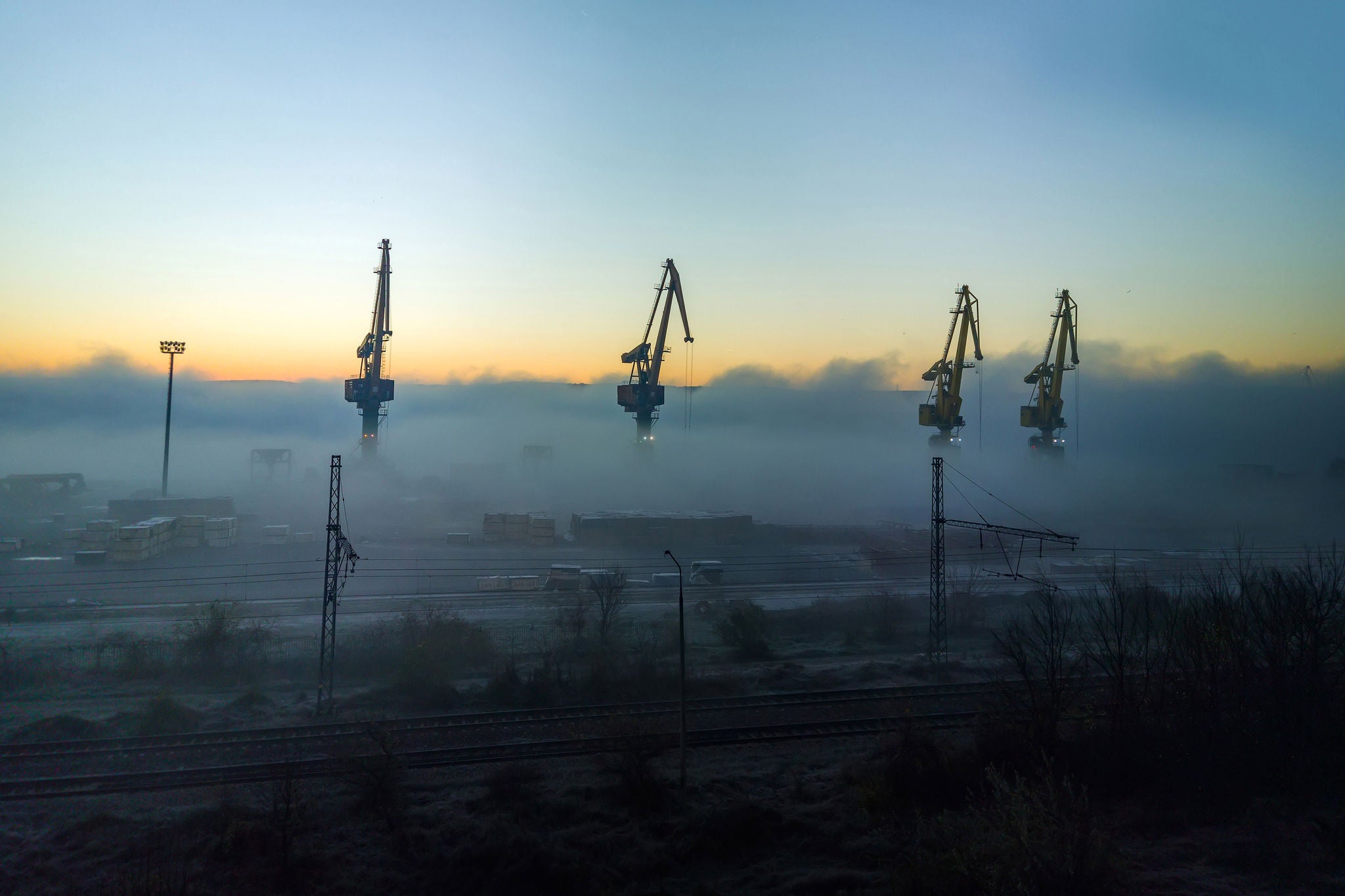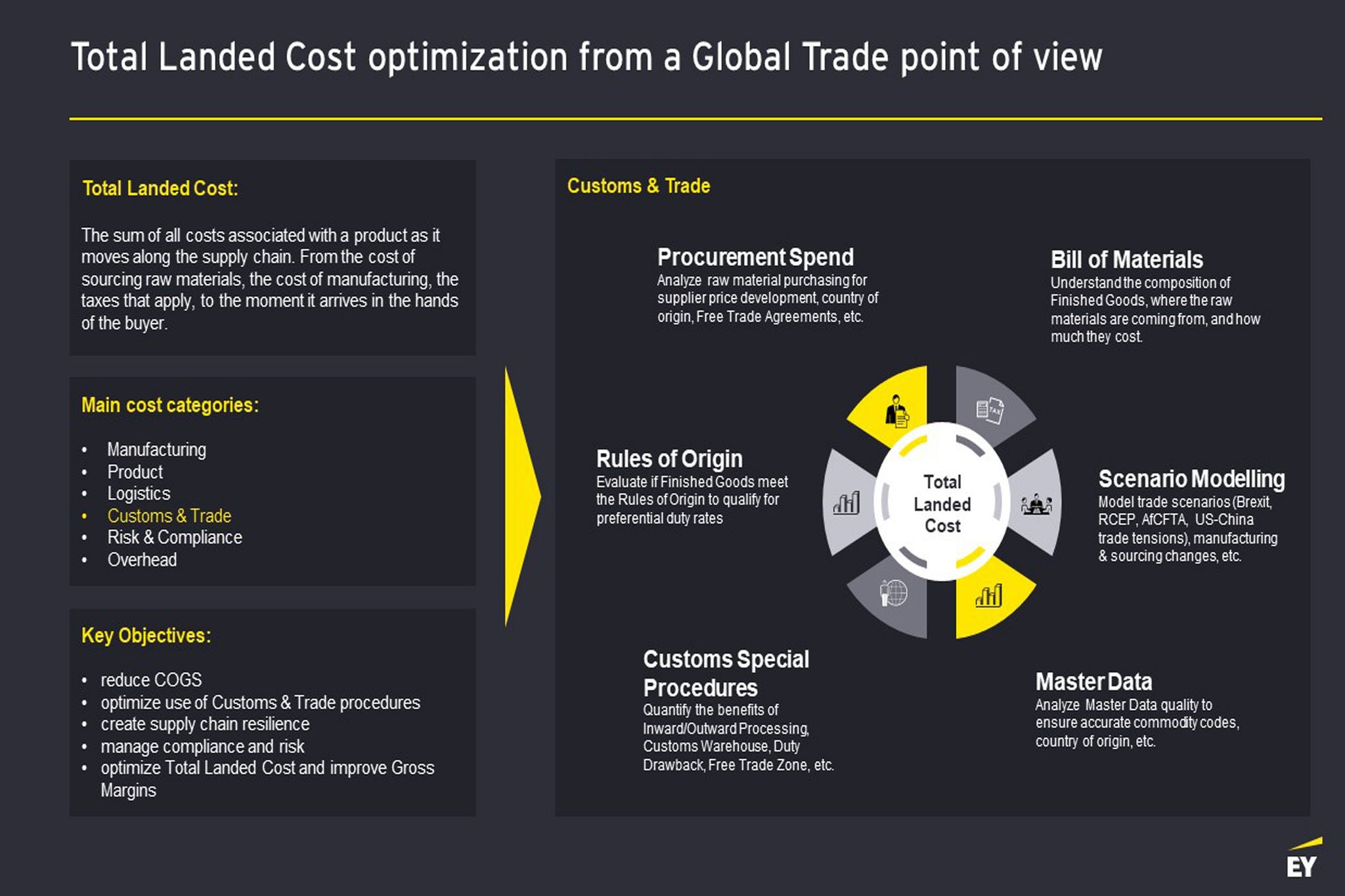EY refers to the global organization, and may refer to one or more, of the member firms of Ernst & Young Global Limited, each of which is a separate legal entity. Ernst & Young Global Limited, a UK company limited by guarantee, does not provide services to clients.
How EY can help
-
Our indirect tax and global trade team can help your business strategically meet its tax obligations and resolve tax controversy. Find out more.
Read more
What is meant by Total Landed Cost?
A range of significant costs are embedded within physical supply chains: sourcing, manufacturing, transportation and logistics costs – as well as direct and indirect taxes and other costs associated with trade. In global chains, there are also financial impacts from transfer pricing and the complex interplay of tax credits and Free Trade considerations.
A Total Landed Cost framework takes a holistic view across the end-to-end supply and value chains – from the origins of raw materials, to manufacturing locations of finished goods, through to final destination markets – to optimize procurement, supply chain and trade costs as products move along the chain.
The links between these costs are often not simply linear and might not be appreciated across the organization, where decisions around global supply are made in a series of isolated and siloed contexts:
- Procurement has a process to decide which suppliers and vendors to use, optimising on unit cost
- Transportation and Logistics has a process to decide how to transport these goods – the channels and pathways to use, the providers to contract with – optimising on transportation unit cost
- Finance manages Transfer Pricing and exerts pressure on other areas to contribute to margin and profit maximisation
- Customs agents work to facilitate movement of goods through these networks without coordination
- Trade isn’t always able to keep up with a changing landscape of Free Trade Agreement networks (e.g., Brexit, Africa Continental Free Trade Agreement, Regional Cooperative Economic Partnership, United States-Mexico-Canada Agreement )
In addition, there is an increasing burden on organizations to manage end-to-end regulatory and compliance requirements despite being hampered by incomplete visibility across functions.
It is therefore easy to see that a simple procurement decision – made at the start of the chain in accordance with a discrete set of priorities – can have significant and unintended impacts on, for example, transportation costs, duties, free trade and customs compliance. For an organization working in this siloed manner, it can be very difficult to foresee these impacts and risks let alone to be able to address or neutralie them proactively. And this is before adding in consideration of the emerging and evolving ESG-related regulations around responsible sourcing, plastics, and carbon.
Examples of issues to which the “business-as-usual” model of global supply chain management is vulnerable can include: (1) hidden impacts where failing to comply with the customs rules of origin can result in higher duty costs because the organization does not fully benefit from preferential duty rates of free trade agreements; (2) unintended consequences of procurement decisions, in which seeking out the lowest cost raw materials can mean higher transportation costs for manufacturers, while there can also be downstream impacts on end-customer free trade agreement qualification; (3) value leakage, where lack of discipline around international trade codes (HS codes) leads to overpayment of duties.
As noted, companies conventionally try to address these kinds of problems reactively, responding to issues as they arise rather than taking a holistic and proactive approach. This becomes a problem not only of cost inefficiency but also risk mitigation: there are very real legal and financial risks associated with non-compliance with customs, trade, and ESG regulations.






